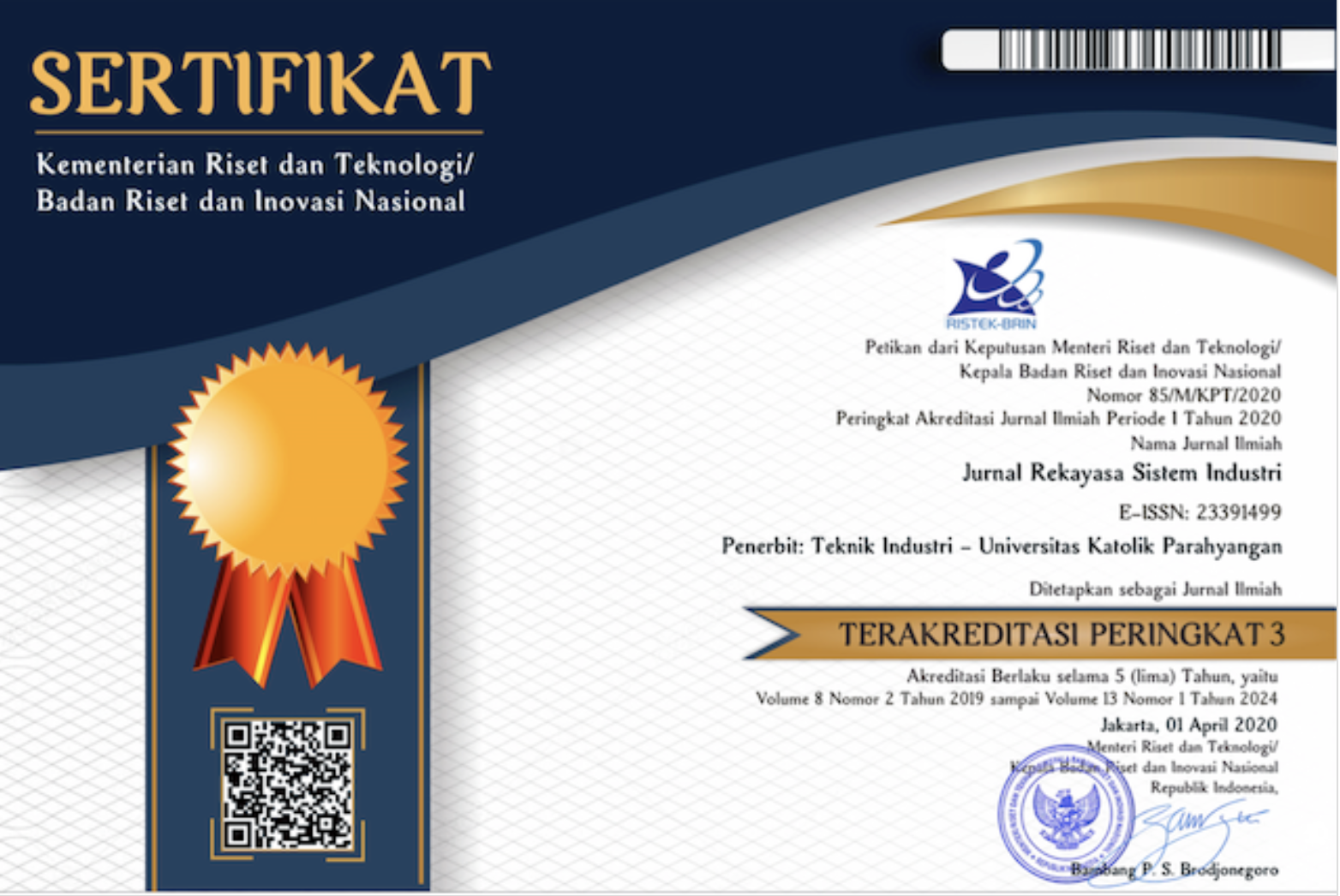Prediksi Akhir Pandemi COVID-19 di Indonesia dengan Simulasi Berbasis Model Pertumbuhan Parametrik
DOI:
https://doi.org/10.26593/jrsi.v9i2.4018.63-68Abstract
This research aims to predict the end of the COVID-19 pandemic in Indonesia based on parametric growth models. The models are chosen by considering their fitness with the data of Taiwan which is believed to have passed over the peak of the pandemic and have gone through all phases in the growth curves. The models are parameterized using the nonlinear least squares method. The deviation and confidence interval of each parameter is estimated using the k-fold cross-validation and the bootstrap techniques. Using the total cases per million population data from March 2 to June 18, 2020, it was found that two growth models fit the data, i.e. logistic and modified Gompertz, where the latter performs better. Using the information about the deviation of each model parameter, a simulation model is developed to predict the time at which the total cases curve starts to flatten, which is an indication of the end of the pandemic. It was found with 95% confidence level that based on the modified Gompertz model the pandemic will end somewhere between March 9 – September 7, 2021 with total cases per million of 206 - 555. Meanwhile, based on the logistic growth model, the end of the pandemic is between August 28 – September 23, 2020 with total cases per million of 180 - 375. This model can be extended by making comparative scenario with Taiwan based on measures that represent the quality of the pandemic mitigation such as test ratio and the intensity of social restriction.
References
Bates, D. M. & Chambers, J. M. (1991). Nonlinear Models. Dalam J. M. Chambers dan T. J. Hastie: Statistical Models in S, (421-454). London: Chapman & Hall.
Bates, D. M. & Watts, D.G. (2007). Nonlinear Regression Analysis and Its Applications. New York: John Wiley & Sons.
Efron, B. & Tibshirani, R. J. (1993) An Introduction to the Bootstrap. New York: Springer Science+Business Media Dordrecht.
Fang, Y., Nie, Y., & Penny, M. (2020). Transmission Dynamics of the COVID-19 Outbreak and Effectiveness of Government Interventions: A Data-Driven Analysis. Journal of Medical Virology, 92, 645-659.
Halloran, M. E. (2001). Concepts of Transmission and Dynamics. Dalam J. C. Thomas dan D. C. Weber (Ed.): Epidemiologic Methods for the Study of Infectious Diseases, (56-85). Oxford: Oxford University Press.
Kahm, M., Hasenbrink, G., Fraté, H. L., Ludwig, J., & Kschischo, M. (2010). Grofit: Fitting Biological Growth Curves with R. Journal of Statistical Software, 33. 1-31.
Kermack, W. & McKendrick, A. (1927). Contributions to the Mathematical Theory of Epidemics. Proceedings of the Royal Society, 115A, 700–721.
Law. A. (2015). Simulation Modeling and Analysis (5th ed.). New York: McGraw-Hill Education.
Moore, C., How a Nation with the Same Population as Australia Dodged Coronavirus Almost Entirely - and not Trusting Their Giant Neighbour China was Step One, [Online], Diakses dari: https://www.dailymail.co.uk/news/article-8213351/How-Taiwan-beat-coronavirus.html, [2020, 19 Juni].
Nuraini, N., Khairudin, K., & Apri, M. (2020). Modeling Simulation of COVID-19 in Indonesia Based on Early Endemic Data. Communication in Biomathematical Sciences, 3, 1-8.
Richards, F. J. (1959). A Flexible Growth Function for Empirical Use. Journal of Experimental Botany, 10. 290-300.
Roser, M. (2020). Coronavirus Pandemic - Country Comparisons, [Online], Diakses dari: https://ourworldindata.org/coronavirus-country-comparisons, [2020, 19 Juni].
Shen, C. Y. (2020). Logistic Growth Modelling of COVID-19 Proliferation in China and its International Implications. International Journal of Infectious Diseases, 96, 582–589.
Vega, D. I. (2020). Lockdown, One, Two, None, or Smart: Modeling Containing COVID-19 Infection: A Conceptual Model. Science of the Total Environment, 730, 1-5.
Zwietering, M. H., Jongenburger, I., Rombouts, F. M., & Riet, K. v. (1990). Modeling of the Bacterial Growth Curve. Applied and Environmental Microbiology, 56. 1875-1881.













